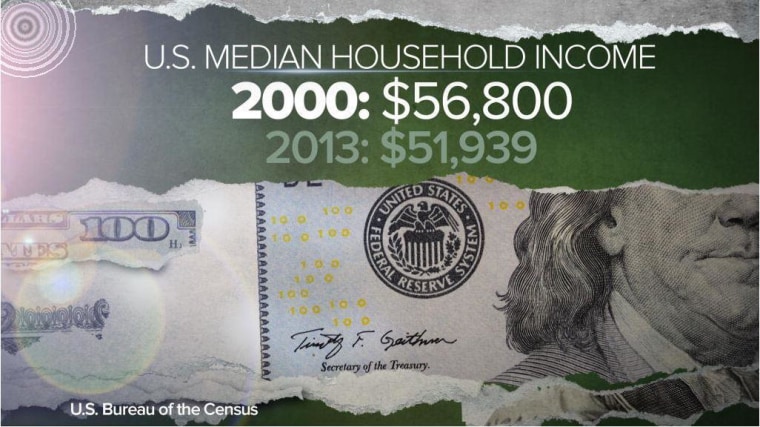There’s a reason why politicians play to the “middle class” in their rhetoric. Whatever your definition of that much sought economic slice, large numbers of both Democrats (42%) and Republicans (44%) believe they are part of it, according to the latest NBC News/Wall Street Journal poll.
But Democrats and Republicans have different ideas about the stability of the middle class and their place in it, particularly when you look at primary voters in the two parties. Democratic primary voters seem to see the “middle class” as an unstable economic category that people can pass through. Republican primary voters, meanwhile, see it as a more static category that is tougher to enter, but also tougher to leave.
The latest poll asked people to place themselves into a socio-economic category: poor, working class, middle class, upper middle class or well-to-do. The questions were asked as past of NBC News’ In Plain Sight project examining poverty in America.
It then asked those who considered themselves middle class and below to respond to two questions.
Those who considered themselves “poor” or “working class” were asked how likely it was that they could move into the middle class in the next five to seven years. And those who categorized themselves as “middle class” were asked how likely it was they could fall out of the middle class in the next five to seven years.
Among those who called themselves “poor” or “working class,” Democrat primary voters were more likely to see their prospects improving in the coming years – 43% believed they were likely to rise into the middle class. Among “poor” and “working class” Republicans the number was 9 points lower – only 34%.
In a way, that’s not a surprise. On many economic questions Democrats have taken a sunnier view in recent years as their man occupies the White House. And Republicans have been more dour, probably for the same reason.
But when “middle class” respondents were asked if they might fall out of the middle class in the coming years, the views flipped. Republicans had a more optimistic outlook. Democrat primary voters had a harsher view, with 20% saying they were likely to fall out of the middle class in the next five to seven years. Among “middle class” Republican primary goers, only 11% said it was likely they would fall down the economic ladder.
The numbers shed some light on the different views Democrats and Republican primary voters bring with them to the voting booth. The poll suggests Democrats see an economy that exposes them to a more fluid situation, which may help explain why they often seek more government involvement. Republicans see themselves as locked into a more stable position, which may be another reason they are more skeptical of government involvement.
But, of course, these figures are based on perception. What is the reality of being “middle class” in America? There are a lot of measures for what the term actually means. Politicians often stretch the meaning to anything between households earning $40,000 a year to those earning well over $100,000
But here are some numbers to keep in mind. The median household income in the United States in 2000 was about $56,800 when adjusted for inflation. In 2013, that figure was $51,939.

In other words, being truly middle-income in America today is worth about $5,000 less than it was 15 years ago.
This story is part of a series: "Class In America: Who Do You Think You Are?" Read the series here.